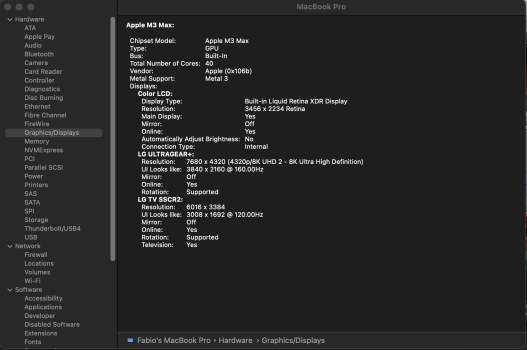I think in the PC/Gaming world, people would probably use "downsampling" to describe rendering at a higher resolution than that of the output display (Nvidia also calls it DSR/Dynamic Super Resolution).I am sorry that my terminology has triggered so many of you.
But since it's now clear what you are talking about, I ran 8K/60Hz through a bandwidth calculator and it seems, it'll only work on HDMI with v2.1 and Display Stream Compression. So I'm a bit surprised, it even worked for you before on the M1. Still, thanks for the heads up! It'll be interesting to see what Apple does about this.


